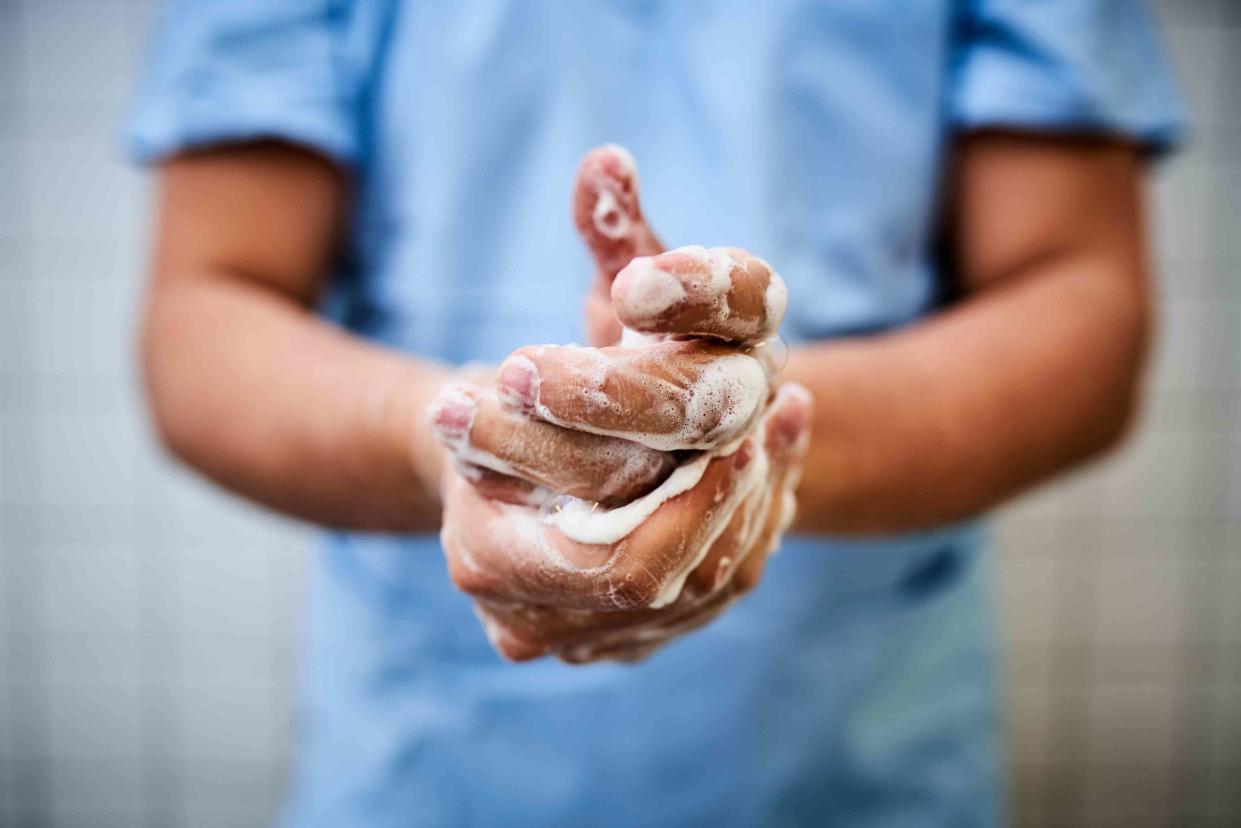How to Know If You're Using Enough Hand Sanitizer

StÃgur Már Karlsson / Heimsmyndir / Getty Images
Fact checked by Nick Blackmer
Key Takeaways
A new study found that many hand sanitizer dispenser systems either dispense too much or too little sanitizer to be fully effective.
You should use enough sanitizer to cover both sides of your hands and between your fingers, and it should take about 20 seconds to dry.
Hand sanitizer should be used as an assistant to regular handwashing, not a replacement, as there are pathogens that cannot be killed by the alcohol in sanitizer.
Many of the automatic hand sanitizer dispensers in the United States either dispense too much or too little sanitizer to be fully effective, according to a study presented at the IDWeek conference this month.
Researchers tested five dispenser systems and found a high variability between each dose. James W. Arbogast, PhD, a co-author of the study, said two dispenser systems occasionally had an output of less than 0.5 ml per use.
“That is not enough to cover the surface of the hands for the majority of people,” Arbogast told Verywell.
Related: Everything to Know About Washing Your Hands
How Much Hand Sanitizer Do You Need Each Time?
According to the Leapfrog Group, a leading patient safety advocacy organization, dispensers should deliver at least 1.0 ml of sanitizer to be effective.
The actual amount of hand sanitizer needed depends on the size of your hands, the temperature, and the product formula, according to Brian Labus, PhD, MPH, an assistant professor of epidemiology and biostatistics at the University of Nevada, Las Vegas, School of Public Health.
“You need to use enough to cover both sides of your hands and between your fingers and to stay there for about 20 seconds,” Labus said. “Using too little won’t kill the germs on your hands. Using too much will take longer to dry and may make you wipe it off your hands.”
No matter how much you use, the hand sanitizer must have a high enough alcohol concentration to work, he added. It needs to contain at least 60% alcohol to be effective, and it will lose potency over time.
“Pay attention to the expiration dates and remember that storing it in hot places, like in your car over the summer, will cause it to lose potency faster,” Labus said.
Related: How to Properly Use Hand Sanitizer
When Should You Use Hand Sanitizer?
Hand sanitizer was originally developed as a way for healthcare workers to remove harmful pathogens from their generally clean hands without constant hand washing, which can dry out the skin, Labus explained. It works best as an assistant to regular hand washing, not a replacement.
“You should always use soap and water if your hands are dirty or greasy,” he said.
Soap and water physically remove pathogens from the skin, Labus added, and there are pathogens that cannot be killed by the alcohol in sanitizer. For example, hand sanitizer just moves common pathogens like norovirus or hospital bugs like C. difficile around the skin without killing it, he said. Hand washing can remove harmful chemicals that hand sanitizer can’t.
But hand sanitizer is the next best option when you’re not near a water supply. It’s most important to either wash your hands or use sanitizer before preparing or eating food, after using the restroom, after touching your pets and their food or treats, handling garbage, and after touching high-touch surfaces like doorknobs and elevator buttons.
And of course, if you’re sick or taking care of someone who is, you will need to disinfect your hands more often.
“You need to rub the sanitizer thoroughly on both sides of your hands and between your fingers,” Labus said. “If you use the right amount, it should take about twenty seconds to fully dry. If it takes longer, you shouldn’t wipe the sanitizer off your hands with a towel, but just let it dry.”
Read Next: Simple Tricks to Avoid Bacteria and Viruses From Public Bathrooms
What This Means For You
While it may seem like a lot, sanitizer needs to cover the entire surface of your hands and fingers and stay there for about 20 seconds to be fully effective. Don’t wipe it off, even if it’s taking a long time to dry.
Read the original article on Verywell Health.

